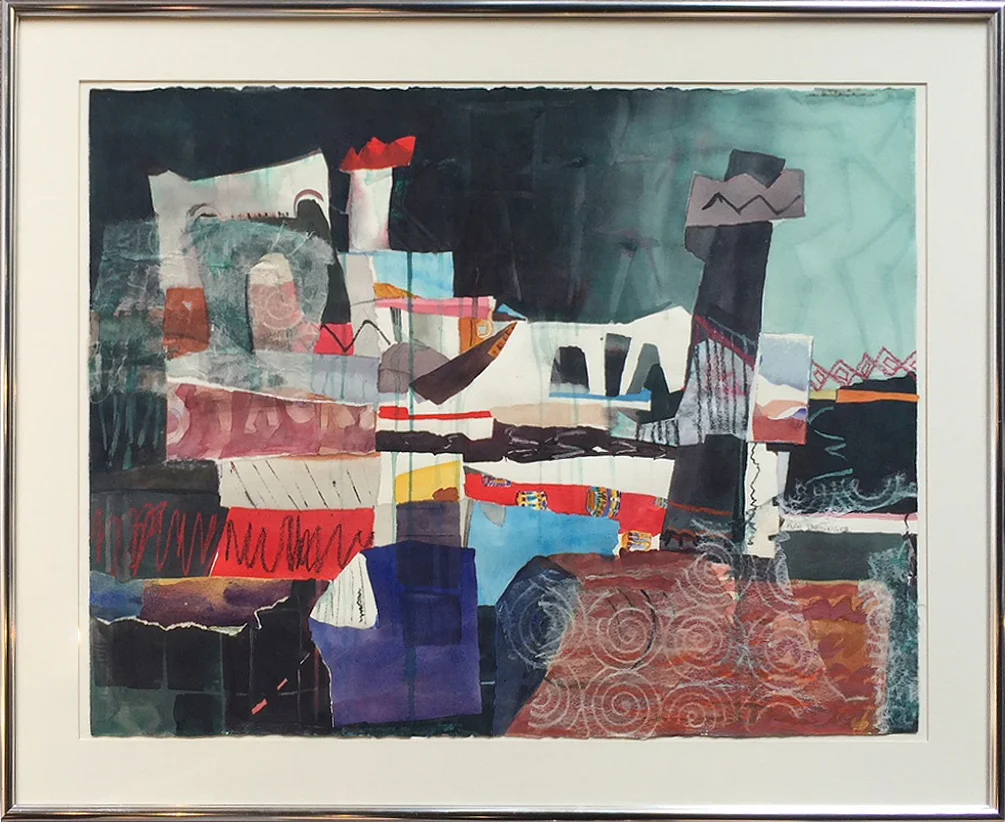Charles Arnoldi
Charles Arnoldi
Untitled, 1990
Monotype in Color / Handmade Paper
11 1/2 x 10 inches
Signed Lower Right
DH1858
Charles Arnoldi was born in 1946 in Dayton, Ohio and never imagined himself having a career in art. While visiting a girlfriend’s grandmother in New York, he took the opportunity to view works by Jackson Pollock and Willem de Kooning. Observing their smudges, smears, and imperfections, he sensed that he too was capable of such work, and decided to attend art school. He arrived in Southern California in 1965 and spent two years at Ventura Junior College before receiving a full scholarship to the Art Center School in Los Angeles.
He only lasted two weeks at his new school before becoming frustrated with limitations imposed upon him as an illustrator. He soon enrolled in the Chouinard Art Institute and gained immediate recognition for his skill when he received a Los Angeles County Museum of Art talent award. When the funding for his tuition ran out, Arnoldi was suddenly faced with having to establish himself as an artist outside of an academic environment.
Arnoldi began using actual tree branches as a compositional element in his works, combined with painting to create stick constructions. These works did not endeavor to create illusions but rather inhabited physical space. His earliest works were almost primitive in their simplicity and shape, resembling woven stick baskets delicately balanced. Arnoldi concentrated on his twig painting for eight years constructing many different forms, freestanding structures, sticks and string, twigs taped together densely or openly.
In 1977, he had one of his small stick structures created in bronze. It was his first metal sculpture and he found that the metal gave permanence to his wooden structures. He continued to use sculpt with metal, often collecting scraps from the foundry, and appreciating their natural form. In the 1980's color started to become more important to him and he used bright pigments to give even more definition to his three-dimensional pieces. He also started to paint on canvas, always reflecting the elements of his wood paintings.
In 1980 he painted his interpretation of the logjam that occurred as a result of the Mt. St. Helens volcano eruption. He juxtaposed his earth-toned canvas against a similar painting created entirely of sticks, mimicking the image on the painted canvas.
He was constantly redefining his artistic approaches, and in the late 1980's started working with large plywood sheets. He glued the layered sheets together, deconstructed the piece using a chainsaw to cut jagged scars into the wood, and then painted it. The work that emerged during this period was fueled by emotional energy that developed from both personal tragedy and personal joy.
In the 1990s, Arnoldi's output changed radically. He began producing abstract paintings on canvas, first black and white, and later brightly colored.
\His first one-man show was at the Riko Mizuno Gallery in Los Angeles in 1971 and subsequent solo exhibitions followed at the James Corcoran Gallery in Los Angeles, (1980-1985), and the Arts Club of Chicago, Illinois (1986). His group exhibitions include the Los Angeles County Museum of Art (1983), the Brooklyn Museum (1986) and the Museum of Contemporary Art Los Angeles (1992).
Charles Arnoldi resides in Venice, California.





